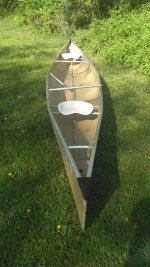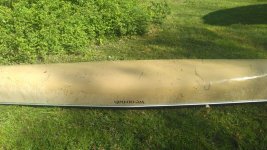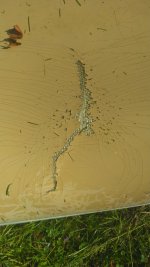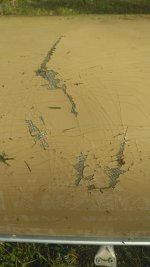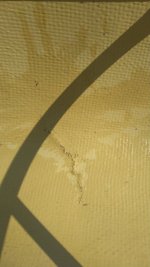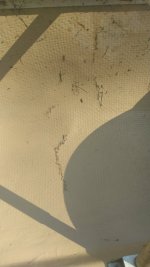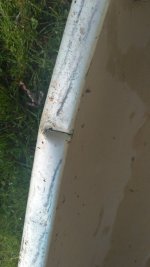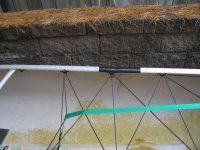- Joined
- Jun 10, 2013
- Messages
- 134
- Reaction score
- 60
I acquired a damaged Wenonah Toughweave Sundowner that was on its way to the dump. Apparently it had a misadventure and wrapped around something or was crushed. The rails are kinked in a number of places and will need to be replaced. I'm going to straighten them out to get the hull fair enough to repair the damage.
Big question I have is how to approach the larger creases where all the resin has blown out of but at least the heavy exterior layer of fiber glass roving has not torn. Should I try and preserve the skin integrity of this layer?
I assume I would have to work from the inside out to get reinforcements behind the roving, and the interior looks much better than the exterior with only 2 tears. If I did all the work from the exterior the boat could end up looking very clean "from the drivers seat"
Is there any reason to get involved in such trickery?
Other question is whether there are any repair quirks specific to Toughweave? If I grind through the roving should I add a layer of similar cloth to the repair lamination?
I'll get some photos up later. Thanks
Big question I have is how to approach the larger creases where all the resin has blown out of but at least the heavy exterior layer of fiber glass roving has not torn. Should I try and preserve the skin integrity of this layer?
I assume I would have to work from the inside out to get reinforcements behind the roving, and the interior looks much better than the exterior with only 2 tears. If I did all the work from the exterior the boat could end up looking very clean "from the drivers seat"
Is there any reason to get involved in such trickery?
Other question is whether there are any repair quirks specific to Toughweave? If I grind through the roving should I add a layer of similar cloth to the repair lamination?
I'll get some photos up later. Thanks

